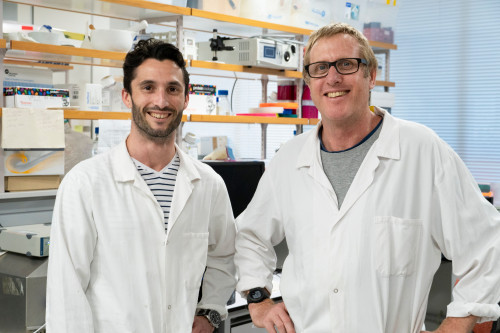Failing hearts in a warming world

Associate Professor Tony Hickey and Dr David Crossman from the University of Auckland will study why each animal species has a critical temperature limit for mitochondrial and heart function.
Due to climate change, global temperatures are on the rise. In response, an organism’s metabolic rate and oxygen consumption must also increase. In particular, an animal’s heart must work harder with increasing temperature to meet the body’s growing demand for oxygen. There is a certain critical temperature limit, nearing which an animal will experience heart failure and die. This limit varies between species, and for some it is only 2°C higher than habitat temperatures, a change which is alarmingly well within global warming predictions!

Dr Devaux and Associate Professor Hickey in the laboratory. Photo supplied
Mitochondria are the tiny but essential powerhouses of cells, including those of the heart. Associate Professor Hickey, Dr Crossman and their international team have discovered that near the temperature limit, heart mitochondria fail to produce sufficient energy for survival, effectively dictating the upper-temperature limit of animals. The precise mechanisms leading to mitochondrial failure, however, are not understood. Cold-blooded animals, such as fish, have evolved to live at specific temperatures. Using temperate and tropical fish, the team will study the effects of increasing temperature on heart mitochondria. Using specifically developed equipment and advanced microscopy, they will define the causes of mitochondrial failure, and why the critical temperature limit differs between species. This Marsden-funded research will be the most comprehensive analysis ever carried out on the effects of temperature on mitochondrial function, and will yield valuable insights into biological impacts of a warming world.
